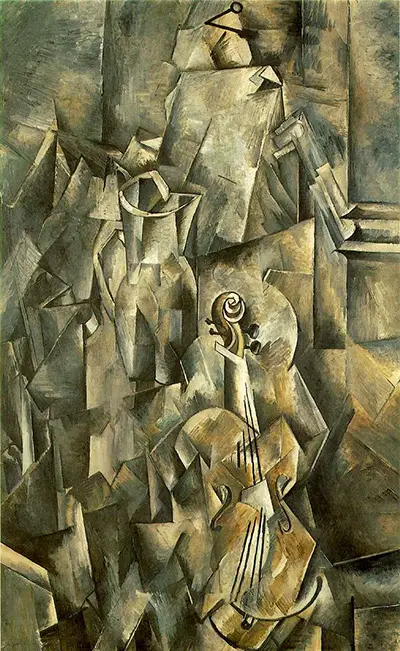Have you ever looked at a work of art and thought, “What is that supposed to be?” Would it surprise you if I said that maybe it isn't supposed to be anything?
When one looks at a work of art, their brain tries to make sense of what they are seeing. Our brains appreciate labels, so we try to place the art within a category to help us understand it. If you don’t have any understanding of the categories, you may simply start out with “I understand what I’m seeing” vs. “I don’t understand what I’m seeing” Learning about the subjects of art can help you to better understand what you are seeing.
For this blog post I am going to stick the two most overarching subjects of art. The two main subjects that visual art can fall into are “non-objective” and “representational”. I will get into some subcategories in later blog posts.
Non-objective refers to works of art that have no connection to anything real or imagined. An example of a non-objective artist in Jackson Pollock. He created works of art by dripping and flinging art onto a canvas that he had laid down on the ground. As he worked, often at a feverish pace, if any image came to mind, if anything he saw reminded him of something, he would obliterate it. He didn’t want any of his marks to refer to anything. That is non-objective art.

Jackson Pollock at work
Representational art, on the other hand, has its origins in things real or imagined. There is a spectrum that representational art can fall on. On one side, there is photo realism where the images are so real you have to question if it is painted or not. Tromp l’oeil, French for “fool the eye”, are works of art that are so real they look like you could reach out and pick up the objects.
Curiosity Aaron Bohrod 1973
An example of Tromp L'Oeil - this is painted on a flat canvas
As you move along the representational scale, images become more and more abstracted or removed from “reality”. Abstraction occurs when the artist exaggerates, amplifies, simplifies, or reorganizes (among other possibilities) reality to create an image.
As an aside, it can be argued that all art is an abstraction - even photo realism and tromp l'oeil - because they are just images of reality and not the real thing. I am of this mind and it reminds me of this painting by Rene Magritte.

The Treachery of Images Rene Magritte 1929
The words on the painting say: This is not a pipe
Through abstraction, images can become rather unrecognizable, but as long as they have their basis in reality, they are considered abstractions. Piet Mondrian, whose highly abstracted works might look familiar to you, pulls from nature in his works even if you can’t recognize where he started. So, his work is “representational”, albeit very much abstracted. His goal was to find the essence of our world, distilled down to its most simple elements.

All of these paintings are by Piet Mondrian, and they are all based on a tree. Notice the progression of abstraction that he uses.
Knowing if a work of art is actually referring to nature or is completely removed from it can help you better understand it. Knowing that Mondrian’s famous grid paintings are actually based on trees may have you look at them in a different way. Knowing that Pollock didn’t want you to find any images in his work may help you to become better immersed in the formal elements of his work: lines, shapes, colors, values, and textures and thereby appreciate them for themselves and not what other artists want to make them represent.
So, the next time you are out looking at art, first decide if what you are looking at is non-objective or an abstraction. If the work has a title that can often give you a hint. If the title is referring to something real or imagined, it is an abstraction. Something titled “Summer Breezes” would be an abstraction, whereas something titled “Composition 241” is probably non-objective.

Violin and Pitcher Georges Braque c.1910
Which category – non-objective or abstraction - would you put this painting into? Let me know in the comments what you think!
*Cover image One:Number 31 Jackson Pollock 1951


